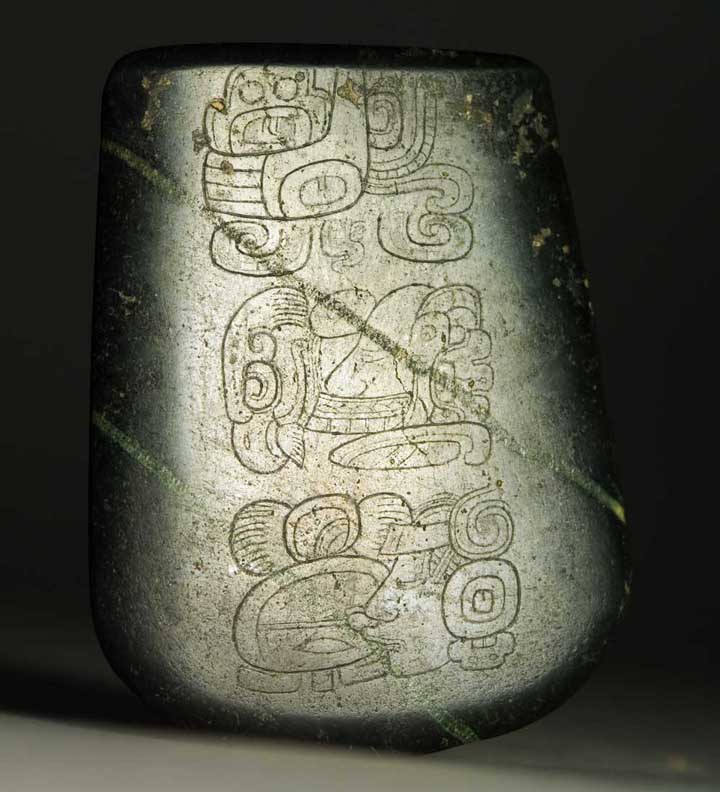Mayavase.com Research Material


Comments from Simon Martin
Wow, what a beautiful text! It concerns the "taking" of an (undeciphered) object by a K'atun Ajaw (probably meaning a young lord under twenty years of age). As you doubtless suspect, it's fairly early, I'd guess 5th century.
Comments from David Stuart
Very nice text, and so gorgeous. I like the simple three-part structure of verb-subject-owner, probably once with an opening CR date.
[Date?]
K'AM-wi-ya
U-?-li
WINIKHAAB?-AJAW
The initial verb is the antipassive derivation k'am-Vw or ch'am-Vw, "takes, receives," with a completive temporal marker -iiy. I assume the next block, the subject, designates the thing itself. The main sign crops up from time to time in other texts, including on the so-called Rio Azul earspools, and possibly in a woman's name on Tikal Stela 39. It has strong visual connections to the WAYWAL sign from Late Classic Palenque, and of course it is the image of the main figure's head on TIkal Stela 31. I have no idea how to read it, but the semantic constraints of this one example could provide a telling piece of evidence someday.
So, I would tentatively translate the text as something like: "It 'takes', the ? of the K'atun Lord."
The translation is awkward since English does not usually use "to take" in an antipassive voice, although perhaps one vague parallel could be when paint or other applied substance "takes," i.e. successfully adheres or attaches itself to another object. Here the sense might be that the object "took" as a gift or offering -- i.e. was received well.
That's a beautiful early form of the wi syllable (a plant root, originally).
Comments from Steve Houston
It's an antipassive form, /ch'am-w-iiy/, for "receive," followed by what I would take to be the object being received -- perhaps the celt itself. The -il is what one would expect with a possessed object. But I'm defeated by the name of the thing, rather like a combination of a Chaak earspool with /way/ head (like Tikal Stela 31), and the strange buccal covering like so much weaving.
I'm also reminded of the engimatic text from
Often antipassives involve object incorporation: i.e., "He celt-receives," "he-k'awiil-receives." But the possessive here is a bit weird, to be sure. I've noticed that there's a strange name-tage on celts, ka-ya-wa-ka, but not sure what to make of it -- the new celt offers another odd term.